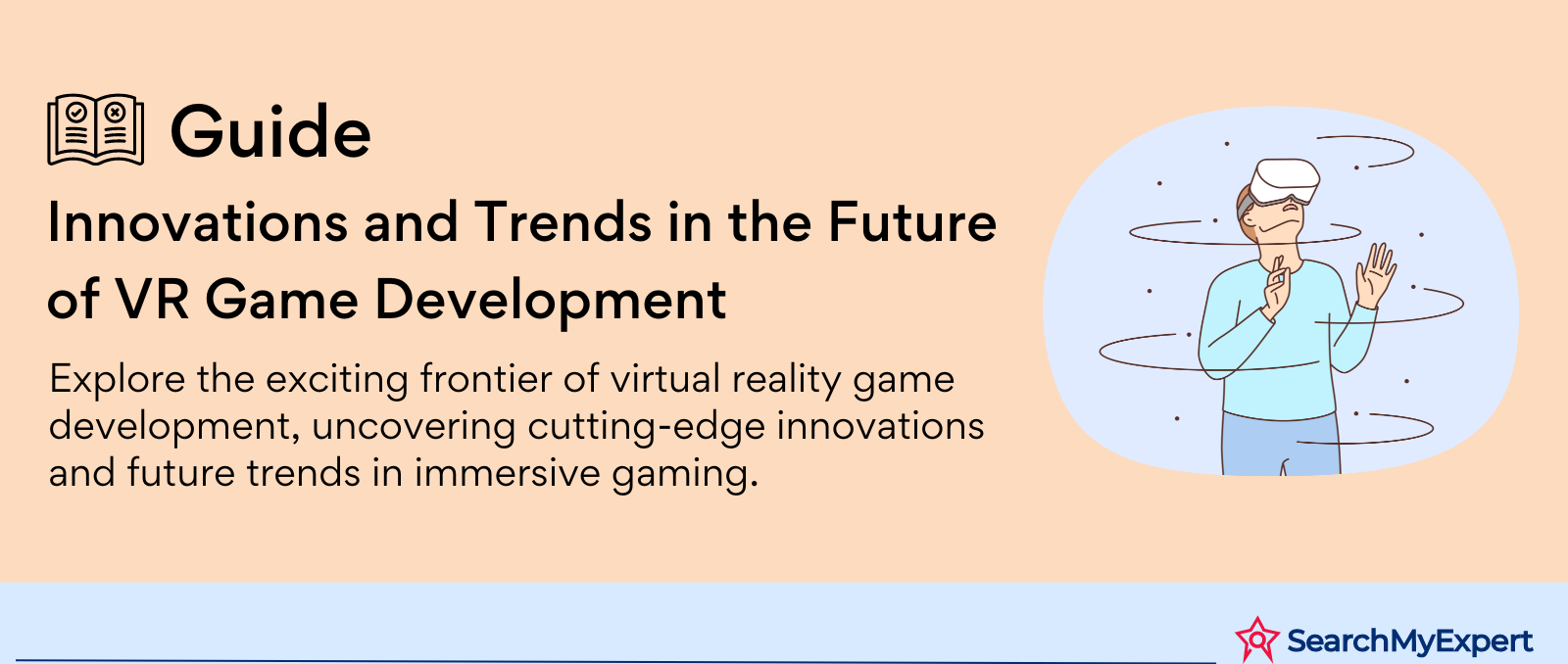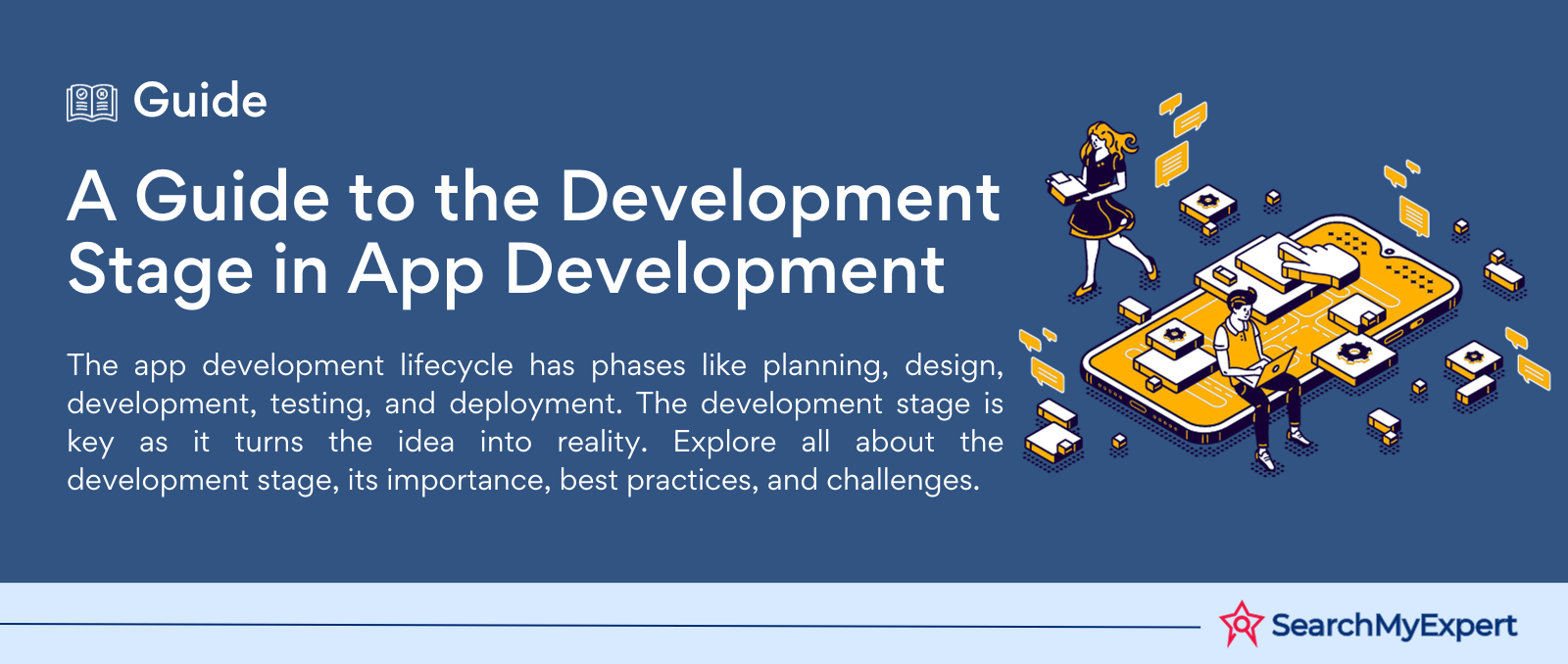Innovations and Trends in the Future of VR Game Development

The Emergence of VR: A Journey Through Virtual Realms
Virtual Reality (VR) technology has revolutionized the way we perceive digital interaction and gaming experiences. The history of VR is a fascinating tale of innovation, technological advancements, and the relentless pursuit of immersive environments. In this introduction, we'll embark on a journey through the evolution of VR and delve into the niche world of VR game development.
Historical Insights: The Genesis of Virtual Reality
The concept of VR isn't a product of the modern tech era. It dates back to the 1950s, with Morton Heilig's Sensorama, a machine considered a forerunner in the field of VR. However, it was in the 1980s and 1990s that VR began gaining momentum with the advent of VR headsets and gloves. These early versions, though rudimentary compared to today's standards, laid the groundwork for the immersive experiences we now enjoy.
Fast forward to the 21st century, and VR technology has taken colossal strides. The release of consumer-friendly VR headsets like the Oculus Rift and HTC Vive around 2016 marked a turning point, bringing VR into mainstream gaming and entertainment. The gaming industry, recognizing the potential of this technology, rapidly integrated VR to provide players with unparalleled immersive experiences.
VR Game Development: A New Realm of Gaming
What Sets VR Game Development Apart?
VR game development transcends traditional gaming paradigms, offering an entirely new canvas for creators. Unlike conventional game development, which focuses on two-dimensional screens and controller-based interactions, VR game development is about crafting 3D, immersive worlds that players can physically navigate and interact with.
The Core of VR Gaming: Immersion and Interactivity
At the heart of VR game development lies the goal of creating a deeply immersive experience. This involves developing environments where players feel physically present, a concept known as 'presence.' VR games achieve this by integrating motion tracking, 3D audio, and haptic feedback, allowing players to move, look around, and interact with the game world in a way that mimics real-life interactions.
Challenges Unique to VR Game Development
Developing for VR isn't without its challenges. Designers must consider factors like motion sickness, which can result from the disconnect between what players see and what they feel. Additionally, creating realistic 3D environments demands high graphical fidelity, which can be resource-intensive. Balancing these technical aspects while maintaining an engaging gameplay experience is a unique challenge of VR game development.
Understanding VR Hardware and Platforms: The Tools of Immersion
In the realm of virtual reality, the hardware and platforms used play a pivotal role in shaping the immersive experience. This section delves into the world of VR headsets and accessories, highlighting major VR hardware providers, and explores the crucial role of Software Development Kits (SDKs) in VR game development.
Popular VR Headsets and Accessories: Gateway to New Worlds
Leading VR Hardware Providers and Their Offerings
- Oculus (Meta Platforms): Oculus, now a part of Meta Platforms, has been a frontrunner in the VR industry. Their headsets, like the Oculus Rift and the Oculus Quest series, offer a balance of quality and accessibility. The Quest series, in particular, is known for its standalone operation without the need for an external PC.
- HTC Vive: HTC's Vive series, including the Vive Pro and Vive Cosmos, is renowned for its high-end graphics and precision tracking. These headsets are often the go-to choice for VR enthusiasts seeking top-tier experiences.
- Sony PlayStation VR: Designed for the PlayStation console, the PlayStation VR headset brings VR gaming to the console market. It stands out for its integration with PlayStation games and its accessibility to the existing PlayStation audience.
- Valve Index: Known for its high-fidelity visuals and sound, the Valve Index offers one of the most immersive VR experiences. It's particularly noted for its precision hand tracking and comfort during extended use.
Accessories: Enhancing the VR Experience
- Hand Controllers: Essential for interaction, hand controllers like the Oculus Touch and Vive Controllers allow players to naturally interact with the VR environment.
- Tracking Systems: Accurate tracking is crucial for immersion. Systems like the Oculus Insight and SteamVR Tracking enable precise movement detection, translating physical actions into the virtual world seamlessly.
- Additional Equipment: From treadmills for virtual movement to haptic suits for sensory feedback, additional VR accessories are continually being developed to enhance the immersive experience.
Software Development Kits (SDKs): The Backbone of VR Development
The Role of VR SDKs
Software Development Kits are the cornerstone of VR game development. These kits provide developers with the necessary tools and libraries to create VR experiences tailored for specific hardware and platforms. SDKs simplify the development process, offering resources like sample code, guidelines, and support for hardware-specific features.
Popular VR SDKs: Facilitating Diverse Development
- Oculus SDK: Specifically designed for Oculus devices, this SDK includes tools for integrating Oculus headset features like head tracking and 3D audio.
- SteamVR: Developed by Valve, SteamVR SDK supports a wide range of headsets, including HTC Vive and Valve Index. It's known for its robust tracking capabilities and support for room-scale VR.
- OpenXR: As an industry standard, OpenXR aims to simplify VR development by providing a unified SDK that works across multiple platforms and devices. This initiative by the Khronos Group is designed to promote cross-platform compatibility.
Design Principles for VR Games
In the domain of virtual reality gaming, the principles of design play a crucial role in dictating the success and player reception of a game. This section focuses on two fundamental aspects of VR game design: achieving immersion and presence and ensuring comfort and effective user interface (UI) design.
Immersion and Presence: The Heart of VR Gaming
Creating Believable and Engaging VR Experiences
The essence of a successful VR game lies in its ability to immerse players in a convincing and captivating virtual environment. This involves meticulously crafting every aspect of the game to enhance the feeling of 'being there.'
- 3D Audio: Sound is a powerful tool in VR. Implementing 3D audio that changes with the player's movements and interactions can significantly increase the realism of the VR experience. It helps in creating an auditory space that feels as real as the visual one.
- Spatial Awareness: Incorporating elements that promote spatial awareness is key. This includes designing environments that players can naturally navigate and interact with, ensuring that objects and scenarios in the game behave as they would in the real world.
- Natural Locomotion: Movement within VR should feel intuitive. Whether it’s through teleportation, trackpad movement, or using more innovative methods like body motion tracking, the way players move in the game should contribute to the sense of presence, not detract from it.
Comfort and User Interface (UI): Designing for the User’s Needs
Minimizing Motion Sickness and Discomfort
Motion sickness is a common challenge in VR, often caused by a disconnect between what the player sees and what they feel. Addressing this involves:
- Smooth Movement Transitions: Ensuring transitions in movement are smooth and gradual can help reduce discomfort.
- Stable Environments: Avoiding excessive movement of the virtual environment itself, such as shaky cameras or fast-moving backgrounds, can also minimize motion sickness.
Optimizing UI for VR
UI design in VR differs significantly from traditional screen-based interfaces. The UI in a VR game should be:
- Intuitive: Icons and menus should be easily understandable and accessible. Incorporating gestures and gaze-based controls can make navigation more natural in a VR setting.
- Unobtrusive: The UI should not break the immersion. Integrating UI elements seamlessly into the game world, such as displaying health stats on a virtual wristwatch, can maintain the feeling of presence.
- Adaptive: The UI should adapt to the player’s movements and actions, appearing when needed and receding to avoid cluttering the visual field.
Development Tools and Programming Languages: Building the Foundations of Virtual Worlds
For aspiring and seasoned developers alike, the selection of appropriate development tools and programming languages is a critical decision in the VR game development process. This section explores the game engines specifically tailored for VR development and discusses the programming languages most suited to this unique and expanding field.
VR-Specific Game Engines: Pioneers of Virtual Realities
Unity with its VR Editor
Unity is a powerhouse in the VR development world, favored for its versatility and user-friendly interface. The Unity VR Editor enables developers to create and test VR content directly within the VR environment, providing a unique and intuitive development experience. Unity's broad compatibility with different VR platforms and its extensive asset store make it a top choice for developers aiming to create cross-platform VR experiences.
Unreal Engine with its VR Editor Toolkit
The Unreal Engine, known for its high-fidelity graphics, is another giant in the VR development arena. The engine's VR Editor Toolkit allows developers to build VR games and experiences within a VR environment, giving them a direct sense of scale, perspective, and spatial awareness. Unreal Engine's advanced rendering capabilities and robust physics engine make it particularly suitable for creating visually stunning and realistic VR worlds.
Programming Languages: The Core of VR Development
C++: Performance and Flexibility
C++ is a staple in game development, prized for its performance and flexibility. In VR development, these attributes are invaluable. C++'s efficiency in handling complex computations and graphics processing makes it a popular choice, especially for high-end VR experiences where performance is key. Its compatibility with engines like Unreal Engine further solidifies its position in VR game development.
C#: Accessibility and Versatility
C#, primarily used in Unity development, stands out for its accessibility and versatility. It offers a more straightforward syntax compared to C++, making it a favorable option for developers who prioritize ease of use and rapid development. C#'s extensive libraries and support within the Unity ecosystem enable developers to create diverse VR experiences with relative ease.
Java: Cross-Platform Compatibility
While not as commonly used as C++ or C# in VR game development, Java holds its ground due to its strong cross-platform capabilities. It's a language known for its robustness and security features. While it may not be the first choice for high-performance VR games, it's a viable option for VR applications that prioritize portability and are less graphically intensive.
Mechanics and Interactions in VR Games: Mastering Movement and Manipulation
In the enchanting world of virtual reality gaming, mechanics and interactions are the lifeblood that drives the player's experience. This section delves into the diverse methods of locomotion in VR games and the intricate nuances of object interaction and physics, which are pivotal in creating a believable and engaging virtual environment.
Locomotion and Teleportation: Navigating Virtual Spaces
Free Movement: Walking in a Virtual World
Free movement, also known as smooth locomotion, allows players to move in the virtual environment in a way that mimics walking or running in the real world. This method, controlled by joystick or trackpad inputs, offers a natural and immersive experience but can be challenging for some players due to the potential for motion sickness.
Teleportation: Leap Through Virtual Realities
Teleportation is a popular method for navigating VR environments, especially for players susceptible to motion sickness. By pointing and clicking to a location, players can instantly 'teleport' to that spot. This method reduces discomfort and disorientation but can sometimes detract from the immersive experience.
Hybrid Approaches: The Best of Both Worlds
Many VR games now employ hybrid locomotion systems, combining elements of free movement and teleportation. This approach allows players to choose their preferred method of navigation, accommodating a wider range of preferences and comfort levels.
Object Interaction and Physics: The Tangibility of the Virtual
Natural Hand Gestures: Bringing Reality into VR
The use of natural hand gestures in VR is fundamental for immersion. VR controllers like the Oculus Touch and Valve Index Controllers are designed to track hand movements and gestures, enabling players to grab, throw, or manipulate objects in a way that feels intuitive and natural.
Physics Simulation: The Foundation of Realism
Physics simulation in VR is crucial for enhancing the realism of the virtual world. Developers use physics engines to ensure that objects behave as they would in the real world. This includes realistic object weight, inertia, and collision responses, making interactions more believable and satisfying.
Haptic Feedback: The Sense of Touch in VR
Haptic feedback in VR controllers adds a layer of sensory immersion. This technology provides tactile responses to actions, such as feeling the recoil of a virtual gun or the resistance of an object being pushed. Haptic feedback significantly enhances the player's engagement with the virtual environment by providing a sense of touch.
Testing and Deployment: Perfecting and Propagating VR Experiences
The final steps in the journey of VR game development involve rigorous testing and strategic deployment. This section highlights the significance of VR beta testing and feedback, and explores the various distribution platforms and monetization models that are key to successfully launching a VR game.
VR Beta Testing and Feedback: Refining the Virtual Experience
The Vital Role of Beta Testing
Beta testing in VR is crucial not just for bug detection, but also for assessing user comfort and engagement. Unlike traditional games, VR games require a special focus on the physical and psychological effects they may have on players. Issues like motion sickness, eye strain, and user interface intuitiveness can only be effectively gauged through real user experiences.
Gathering and Implementing Feedback
Feedback from beta testers is invaluable. It provides insights into how different players interact with and respond to the VR environment. This feedback helps developers make necessary adjustments to gameplay, mechanics, and overall user experience, ensuring the final product is well-received by its target audience.
Distribution Platforms and Monetization: Launching into the Virtual Market
VR Game Distribution Platforms
- SteamVR: As a leading platform for PC gaming, SteamVR offers a vast audience and robust infrastructure for VR game distribution. It supports a wide range of VR headsets, making it a versatile choice for developers.
- Oculus Store: Tailored for Oculus VR headsets, the Oculus Store is an ideal platform for reaching Oculus users. It provides a streamlined experience for both developers and users, with a focus on quality and compatibility.
Exploring Monetization Models
- Purchase Model: This traditional model involves a one-time purchase of the game. It's straightforward and preferred by many players, but requires a strong marketing strategy to ensure enough initial sales.
- Subscription Model: A subscription-based model provides ongoing revenue and can be attractive for games with continuous content updates or online features.
- Microtransactions: Implementing microtransactions, such as in-game purchases for cosmetics or additional content, can be a lucrative model, especially for games that already have a strong user base.
Hybrid Models
Many games combine these models, offering a base purchase with optional subscriptions or microtransactions for additional content or features.
The Future of VR Game Development: Innovations and Horizons
As we venture into the future of VR game development, it's essential to recognize the emerging technologies and trends shaping this vibrant field. This section explores advancements in VR technology that are set to revolutionize gaming experiences, along with current trends and opportunities that signal the expansive potential of VR beyond entertainment.
Emerging Technologies: Redefining Immersion in VR
Eye Tracking: The Window to Enhanced Realism
Eye tracking technology in VR has the potential to transform gaming experiences by allowing for more natural interactions and enhancing immersion. This technology can enable games to respond to where a player looks, making for more intuitive gameplay and potentially reducing motion sickness by adjusting visual focus dynamically.
Haptic Suits: A Leap Towards Full Sensory Immersion
Haptic suits, equipped with sensors and feedback mechanisms, offer a leap towards full sensory immersion in VR. These suits can simulate physical sensations such as touch, temperature changes, and impact, providing a deeper level of engagement in virtual environments and expanding the scope of interactive possibilities in VR games.
Full-Body Tracking: Bringing the Entire Self into Virtual Worlds
Full-body tracking technology takes immersion a step further by incorporating the player's entire body movements into the VR experience. This advancement allows for more realistic and nuanced interactions within the game, potentially leading to more physically engaging and active VR gaming experiences.
Trends and Opportunities: The Expanding Universe of VR
Multiplayer Experiences: Beyond Single Player Realms
The trend towards multiplayer VR experiences is growing, as these games offer a social dimension that enriches the VR experience. Multiplayer VR games encourage collaboration, competition, and social interaction in virtual spaces, mirroring real-world social dynamics in a virtual context.
Location-Based VR: A New Destination for Gaming
Location-based VR experiences, where players visit physical spaces designed specifically for VR gaming, are becoming increasingly popular. These experiences offer highly immersive and interactive environments, often not achievable at home, and present unique opportunities for storytelling and adventure in VR.
VR in Education and Training: Beyond Gaming
The potential of VR in education and training is immense. VR can provide realistic simulations for training in fields like medicine, aviation, and engineering, offering safe and controlled environments. Additionally, VR's ability to create immersive educational content can revolutionize the way complex concepts are taught and understood.
Conclusion
The future of VR game development is not just about advancing technology but also about expanding the scope of VR applications. From the development of more immersive and interactive technologies like eye tracking, haptic suits, and full-body tracking, to trends that push VR into multiplayer, location-based experiences, and educational realms, the possibilities are endless. As VR continues to evolve, it promises to redefine not only gaming but also the way we interact, learn, and experience the world around us.
Experience next-gen gaming development with our Game Development Company.
share this page if you liked it 😊
Other Related Blogs

Mastering Docker for App Development: A Comprehensive Guide to Benefits, Use-Cases, and Alternatives
STAY UP TO DATE
GET PATH'S LATEST
Receive bi-weekly updates from the SME, and get a heads up on upcoming events.
Contact Us











